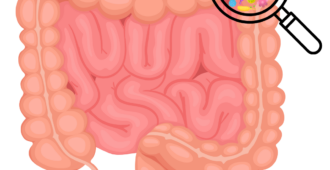If you looked at the motor neurones of people with MND down the microscope you would see clumps of a protein called TDP-43. Researchers around the world are working to find why these clumps form and how they are linked to MND.
Dr Jemeen Sreedharan has been looking at the effects of TDP-43 in fruit flies. Initially he investigated how TDP-43 caused its effects, later moving on to find ways to reduce or prevent the damage. He spent the first two years of his MRC and MND Association-funded Fellowship (our reference: 943-795) working at the University of Massachusetts, Boston USA returning last autumn to perform the next stages of his research at the Babraham Institute near Cambridge, UK.
How TDP-43 changes motor neurones

Dr Sreedharan found that TDP-43 changes the shape of motor neurones – in particular it damages the connection the neurones make with muscles. A loss of connection is caused by the neurone shrinking back from the muscle (also known as dying back).
“The first physical signs of disease we see in the flies is the disruption of the neuromuscular junctions, accompanied by a ‘dying back’ of the nerve terminal from the muscle. This is very similar to what happens in both mouse models and in human MND,” explains Dr Sreedharan.
“Within days of these initial events, the axons themselves display significant disruption and degeneration.” The axon is the long part of the nerve cell which carries the electrical impulses and messages down towards the muscle.
A genetic way of protecting the motor neurones
Rather than look at designing drugs to prevent this from happening Dr Sreedharan took a genetic approach. He bred the TDP-43 flies with flies with random sites of genetic damage. He then studied the motor neurones of this next generation of flies. After over 3,000 breeding experiments Dr Sreedharan found mutations in three ‘good’ genes that delay motor neurone death. If we can replicate the effects of these three ‘good’ genes, then it may be a step towards developing therapies against the damaging effects of TDP-43.
Dr Sreedharan is currently setting up the mouse breeding colonies at the Babraham Institute, to replicate these findings. This is the next step in the process of confirming the relevance to human MND. We have recently awarded him an additional grant to fund this work.
For more information on funding research involving animals please see our website: www.mndassociation.org/animalresearch
Throughout June 2016 MND Awareness Month will be highlighting the rapid progression of the disease in its powerful Shortened Stories campaign, sharing the experiences of people currently living with MND, or who have lost loved ones to the disease, through art, poetry and film.





